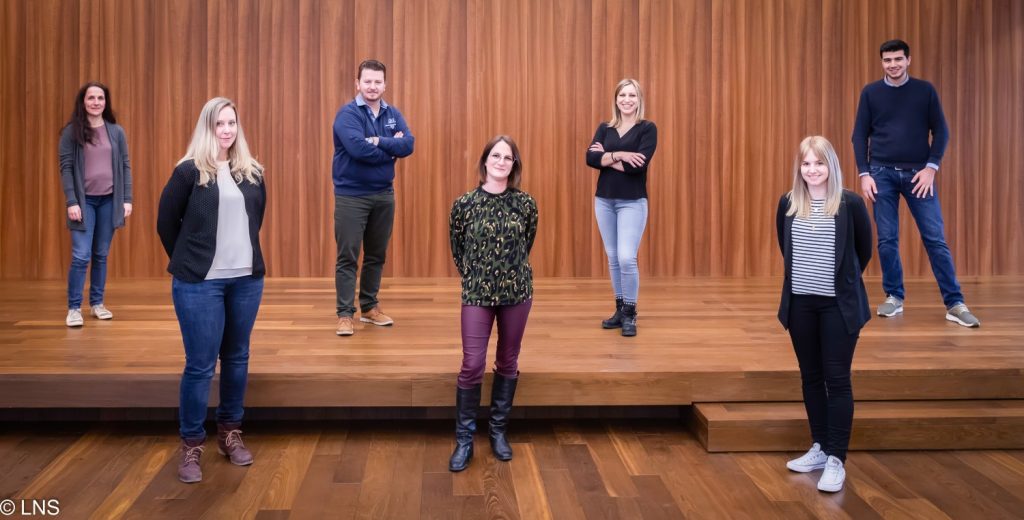Our services:
A. Laboratory analyses:
We analyze indoor environment samples (e.g. air, dust and surface) that are collected in patients’ houses, in public buildings, in private companies or at the workplace. Chemical and metal analyses are our historical strengths since the 90’s and we adhere to the international guidelines and state-of-the-art. Since end 2022, a new Laboratory on the Built Environment Microbiology has become operational within the Service.
Furthermore, we also analyze human biological samples, such as blood, urine, hair, etc. for chemical substances and/or their metabolites. This activity, called “human biomonitoring”, allows to monitor and measure the exposure of patients to various substances. Aside from exposure biomarkers, we develop novel health biomarkers and effect biomarkers, playing a role in the pathways of diseases development.
As National Health Laboratory, we limit our analyses for indoor pollution and occupational hygiene to situations with a documented health problem in patients or workers. We thus proceed with analyses following a medical prescription or a request from general practitioners, specialist-physicians, occupational health physicians, safety & health referents or equivalent, or at the request of the Ministry of Health.
For the “human biomonitoring” activity, we also measure in the Luxembourgish population without known health problems. By doing so, we may provide policy-makers with estimates of the exposure and the potential health risks in the general population. This includes also specific time-windows, for example, pregnancy or childhood, during which exposure to harmful substances may have a major impact on health in the later life.
Chemistry – indoor air, dust and surface samples:
- Volatile organic compounds (VOC) in air, for example: benzene and toluene;
- Aldehydes in air, for example: formaldehyde and acetaldehyde;
- Semi-volatile organic compounds in dust, for example:
o Biocides, for example: Chlorpyrifos and DDT;
o Flame retardants, for example : polybromodiphenyethers (PBDE) and Polychlorbiphenyls (PCB)
o Plasticizers, for example : phthalates and bisphenol A
o Polycyclic aromatic hydrocarbons, for example : phenanthrene and pyrene
- Inorganic elements in dust, for example : lead and mercury
Microbiology – indoor air, dust and surface samples:
- Molds and yeast in air, dust and surface samples, for example: penicillium sp. and aspergillis sp
- Allergens in dust samples, for example: dust mites
- Bacteria in air samples
Chemistry – human biological samples:
- Inorganic elements:
o in urine, for example: chromium, mercury and iodine
o in blood, for example: mercury and lead
o in serum, for example: copper and zinc
- Organic compounds:
o in urine, for example: S-phenyl mercapturic acid (SPMA) and S-benzyl mercapturic acid (SBMA)
o in serum, for example: Hexabromocyclododecane (HBCDD), polybromodiphenyethers (PBDE) and Polychlorbiphenyls (PCB)
More information on the performed analyses
More information on the ISO/IEC 17025 accreditation
B. Scientific expertise:
State-of-the-art in environmental and occupational health:
Our technical responsible participate in several working groups at international level to ensure that the laboratory implements the latest state-of-the-art in environmental and occupational health at the service of the Luxembourger patients and population.
Innovation in environmental and occupational health:
In addition, some of our technical responsible belong to the major drivers of innovation and excellence in environmental and occupational health at international level:
Radu Duca, PhD, ERT has several activities as expert outside the LNS:
- Member of the OECD Expert Group on “Using Adverse Outcome Pathways (AOP) to address combined exposures to chemicals with relevant effect-biomarkers” in the framework of the OECD Working Party on Hazard Assessment and Working Party on Exposure Assessment
- Expert for the scientific evaluation of Ethical Requests for Animal Experimentation on behalf of the Division de la pharmacie et des médicaments, Direction de la Santé, Ministry of Health, Luxembourg
- Member of “Comité d’experts Santé, Environnement, Travail”, Santé publique France (SpF)
- Member of the American Conference of Governmental Industrial Hygienists (ACGIH®) Biological Exposure Indices (BEI) Committee, USA
- Secretary of the Scientific Committee of Occupational Toxicology (SCOT), International Commission on Occupational Health (ICOH)
C. Applied research:
We are a major drivers in:
- the Health Partnerships in environmental and occupational health:
We have taken the lead for Luxembourg in the previous program HBM4EU – Science and policy for a healthy future (July 2018 – June 2022).
HBM4EU was a joint effort of 30 countries, the European Environment Agency and the European Commission, co-funded under Horizon 2020. The initiative has coordinated and advanced human biomonitoring in Europe. HBM4EU has generated evidence of the actual exposure of citizens to chemicals and the possible health effects in order to support policy- making.o We are leading the current program for Luxembourg, i.e. PARC – European Partnership for the Assessment of Risks from Chemicals (May 2022 – 2029). More information on PARC
- Advancing aggregate exposure to chemicals in EU:
This project aims to develop the strategic roadmap in response to the European Food Safety Authority (EFSA) tender “Development of a roadmap for action for the project: Advancing aggregate exposure to chemicals in EU” (hereafter referred to as ExpoAdvance), OC/EFSA/ED/2022/04. The roadmap will allow EFSA to be prepared and to more efficiently address requests for aggregate exposure assessments for single chemicals, especially under the “one substance, one assessment” approach and to create guidance on how to best perform aggregate exposure assessment by 2030. The consortium comprises ten leading organisations (including LNS) in the field of human exposure assessment with a variety of expertise in the areas of toxicology, exposure modelling, human biomonitoring, regulatory chemical risk assessment, and stakeholder engagement and communication strategies.
We have worldwide impact, by contributing to expert groups in projects developed by the Organisation for Economic Cooperation and Development (OECD):
- Occupational Biomonitoring Project – WPHA and WPEA Occupational biomonitoring and derivation of biomonitoring guidance or limit values (2019 – 2021): This project was focused on improving methods for deriving health based human biomarker values (BMGV, BLV, DNEL biomarker). Such biomarker values can be used to interpret measured levels of biomarkers in a risk assessment context. The major outcome of this project is the Occupational Biomonitoring Guidance Document, OECD Series on Testing and Assessment, No. 370, Environment, Health and Safety, Environment Directorate, OECD 2022.
- Using Adverse Outcome Pathways (AOP) to address combined exposures to chemicals with relevant effect-biomarkers Project (2022 – 2025): This project aims to bridge gaps between toxicology and exposure science with health or population risks by addressing improved substance assessments, and unknown and known mixture assessments in a regulatory context. Moreover, this project intends to further integrate AOPs knowledge into science and regulation based on uses of biological effect measurements from an expanding array of alternative assays and endpoints in quantitative risk assessments.
Publications:
D. Education & Teaching
We accommodate Post-docs, PhD students and internships of Master students. We welcome about 2 students each year.
Together with the University of Luxembourg, we are partners in the Euro-African Biomonitoring Network for the assessment of environmental exposure in population through universities and occupational health services – ERASMUS+ Project.
Our partners:
- Ministry of Health Luxembourg (MISA)
- Directorate of Health Luxembourg (DISA)
- Services of Occupational Medicine (Service de santé au travail multisectoriel, STM and Service de Santé au Travail de l’Industrie, STI)
Our team:
[Please note that this page is still under construction – the complete list of team members will be added at a later stage].


